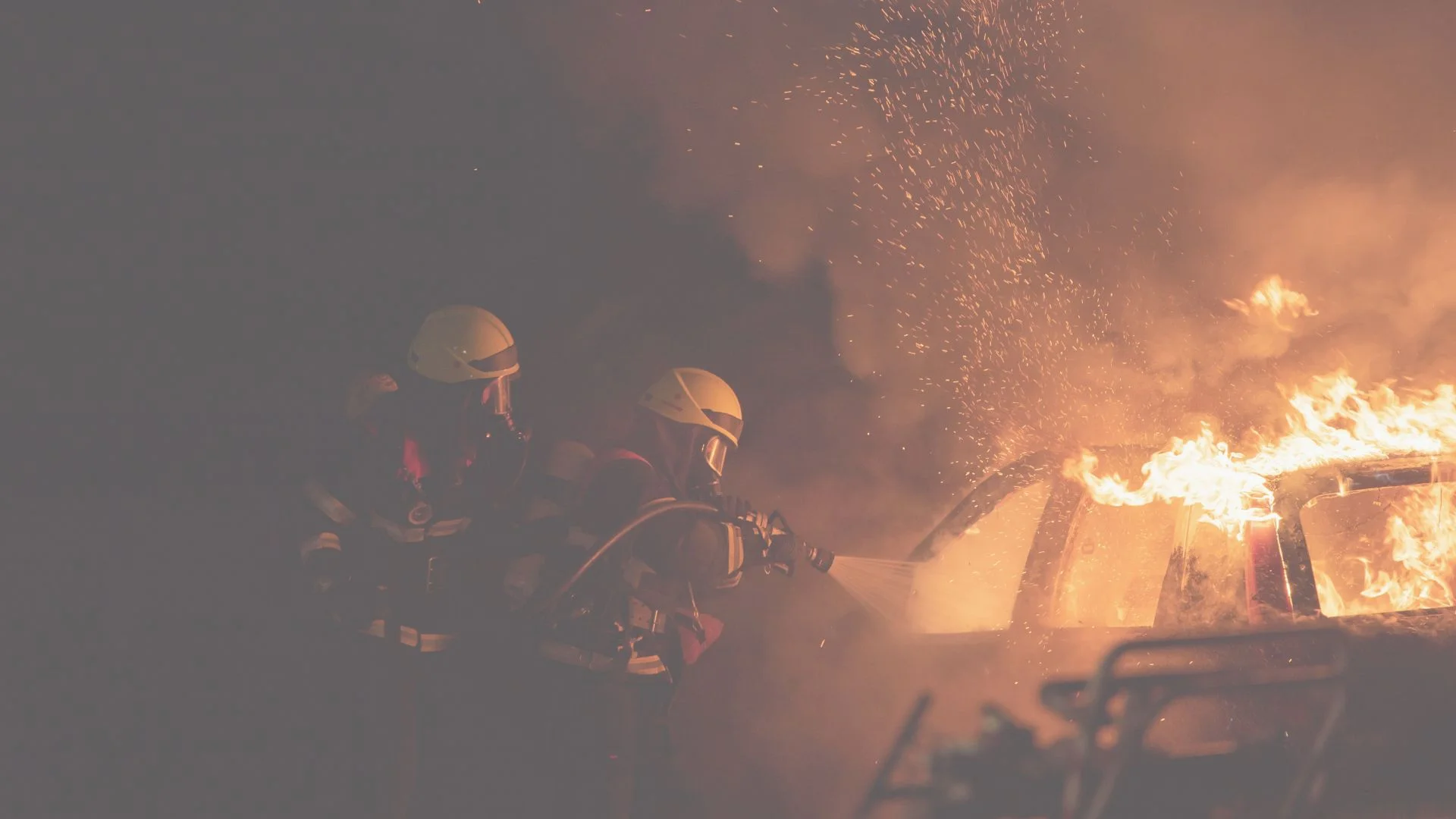On October 10th, a long stay car park at Luton Airport’s terminal two went up in flames. In a matter of minutes the fire because uncontrollable, and the fire brigade was alerted. Just four years after a multi-million pound modernisation renovation, the fire caused a catastrophic structural collapse – leading to a total loss for Luton Airport.
Before the investigation is complete, there is no way to know exactly how the blaze started. Although it’s thought that it was entirely accidental. Early suggestions were that an electric vehicle caused the fire, which has been a theme in recent years. Electric car fires do present an extremely dangerous situation, with lithium batteries burning at 500 degrees at which point the cell explodes.
When electric car fires burn they release over 100 organic chemicals, including some incredibly toxic gases such as carbon monoxide and hydrogen cyanide – both of which are fatal to humans.
However, the statement that electric car fires are common is a complete misconception. Between 2-3% of vehicles on the road are electric, and in 2019 the London Fire Brigade reported that they 2.8% of car fires they attended were electric vehicles.
In actual fact, authorities believe the fire started with a diesel powered vehicle, more precisely the 12V car battery inside the diesel vehicle.

The fire ripped through the car park that at the time was apparently holding approximately 1,500 cars. Estimates of the damage would be £25million worth of personal belongings, with the average price of used cars being £16k in 2023. Not to mention the cost to Luton Airport the fire caused the car park.
Luton Airport authorities have reported on October 12th that the car park was not fitted with a sprinkler system of any kind. Experts have suggested that the prior installation of a system of this kind would have made a positive impact. Understandably though, officials opted to not install a sprinkler system with the cost of fitting a system like this been in the millions, with retrofitting being a more expensive option. Alas, officials are claiming this could become mandatory to avoid a situation like this happening again.
While sprinklers could have made a positive impact, we know that fire alarms likely had a life-saving effect for visitors to the facility. Airport staff were warned of the fire early, and their training had prepared them to evacuate the car park. Thanks to their quick thinking, and likely the modern fire detection and alert systems installed in the car park. Hundreds of lives were saved – Luton Airport is the UK’s 5th largest airport, carrying 13 million passengers every year.
Insurance companies in the UK may have specific requirements for fire alarm systems based on a category P system and are increasingly requiring a P1 category system with total coverage of the building by Automatic Fire Detection (AFD) This is based on the type of property they are insuring, and the level of risk involved. The specific requirements can vary between insurers, so it’s crucial to check with your insurer and ensure your fire alarm system complies with their standards.
Please note that fire safety regulations and insurance requirements can change over time, so it’s essential to stay updated with the latest regulations and consult with your insurance provider for the most current information regarding fire alarm requirements for your property and its insurance coverage to make sure you are covered in the event of a fire by your insurance policy.
If sprinklers do become mandatory for multi-story car parks. The most valuable option will still be a modern fire alarm. Early waning systems and good preparedness are invaluable to give Fire Wardens and Fire Marshalls the chance to evacuate the facility. Luton Airport’s staff are heroes, and without their quick reactions many people could have died from such a dangerous situation.
Curious about your fire safety coverage?
Speak to an expert and book a full fire Risk Assessment today.
To provide the best experiences, we use technologies like cookies to store and/or access device information. Consenting to these technologies will allow us to process data such as browsing behaviour or unique IDs on this site. Not consenting or withdrawing consent, may adversely affect certain features and functions.